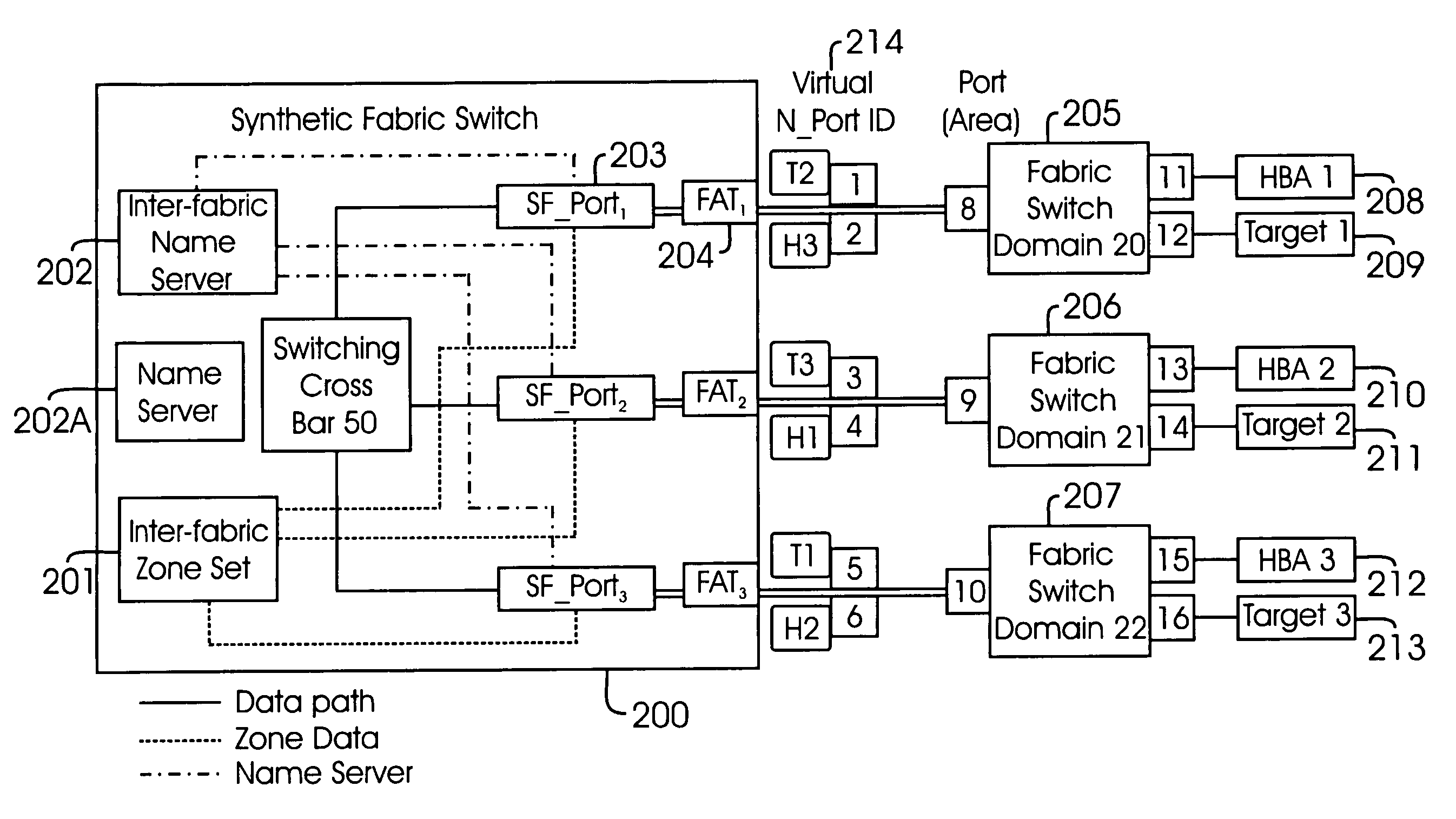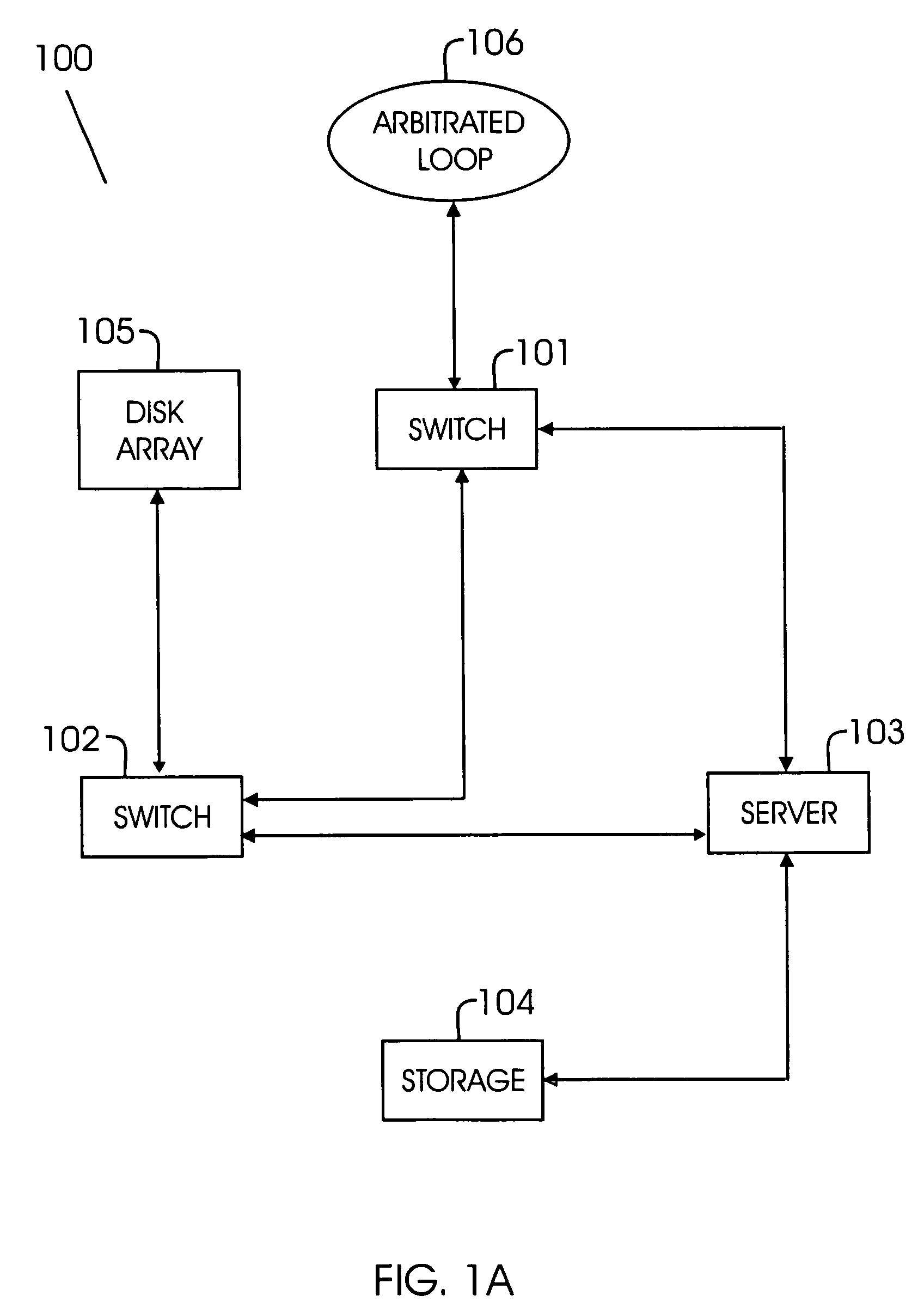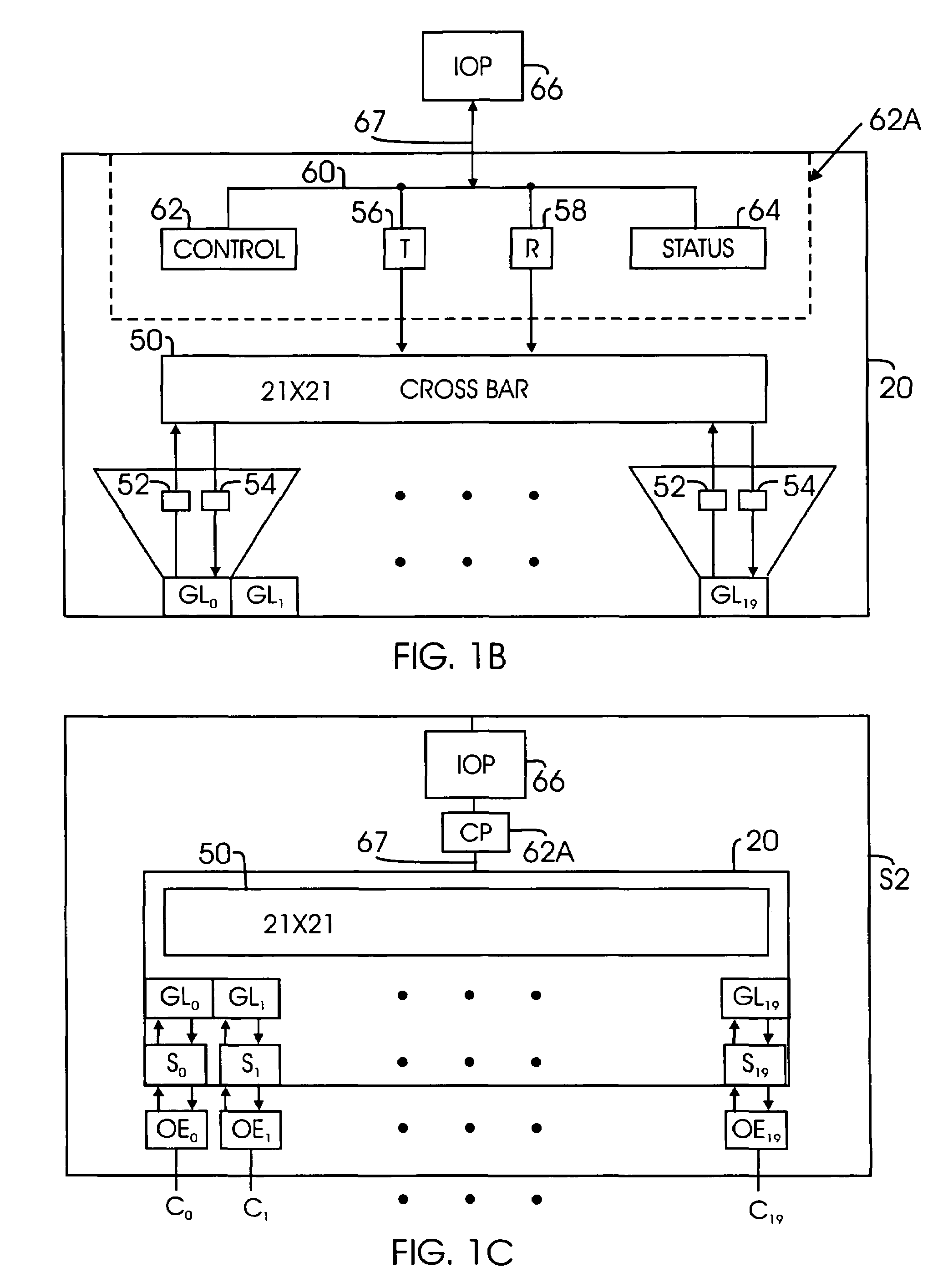Method and system for inter-fabric routing
a technology of inter-fabric routing and routing methods, applied in the field of fibre channel network systems, can solve the problem that the switch device must accommodate new devices
- Summary
- Abstract
- Description
- Claims
- Application Information
AI Technical Summary
Benefits of technology
Problems solved by technology
Method used
Image
Examples
Embodiment Construction
Definitions
[0026]The following definitions are provided for convenience as they are typically (but not exclusively) used in the Fibre Channel environment, implementing the various adaptive aspects of the present invention.
[0027]“CRC” (cyclic redundancy code): A 4 byte value used for checking data integrity of a Fibre Channel frame.
[0028]“D_ID”: A 24-bit Fibre Channel header field that contains the destination address for a frame.
[0029]“E_Port”: An expansion port that is used to connect Fibre Channel Switch elements in a Fabric.
[0030]“Fabric”: The structure or organization of a group of switches, target and host devices (NL_Port, N_ports etc.).
[0031]“Fabric Tag”: An identifier assigned to each Fabric and it's value is set to the port number of the SF_Port that has a native connection to the Fabric.
[0032]“FAT”: Fabric Address Translator that monitors incoming frames, compares D_ID and S_ID values, and when a match is found, replaces the D_ID and S_ID values with those contained within...
PUM
 Login to View More
Login to View More Abstract
Description
Claims
Application Information
 Login to View More
Login to View More - R&D
- Intellectual Property
- Life Sciences
- Materials
- Tech Scout
- Unparalleled Data Quality
- Higher Quality Content
- 60% Fewer Hallucinations
Browse by: Latest US Patents, China's latest patents, Technical Efficacy Thesaurus, Application Domain, Technology Topic, Popular Technical Reports.
© 2025 PatSnap. All rights reserved.Legal|Privacy policy|Modern Slavery Act Transparency Statement|Sitemap|About US| Contact US: help@patsnap.com



